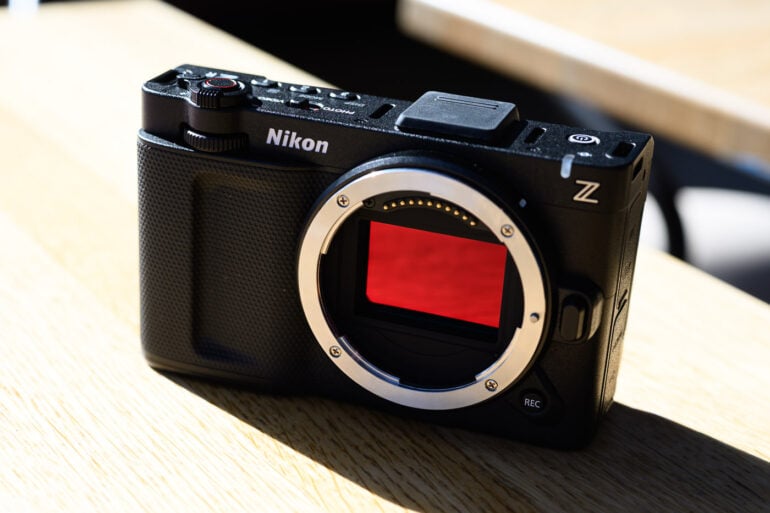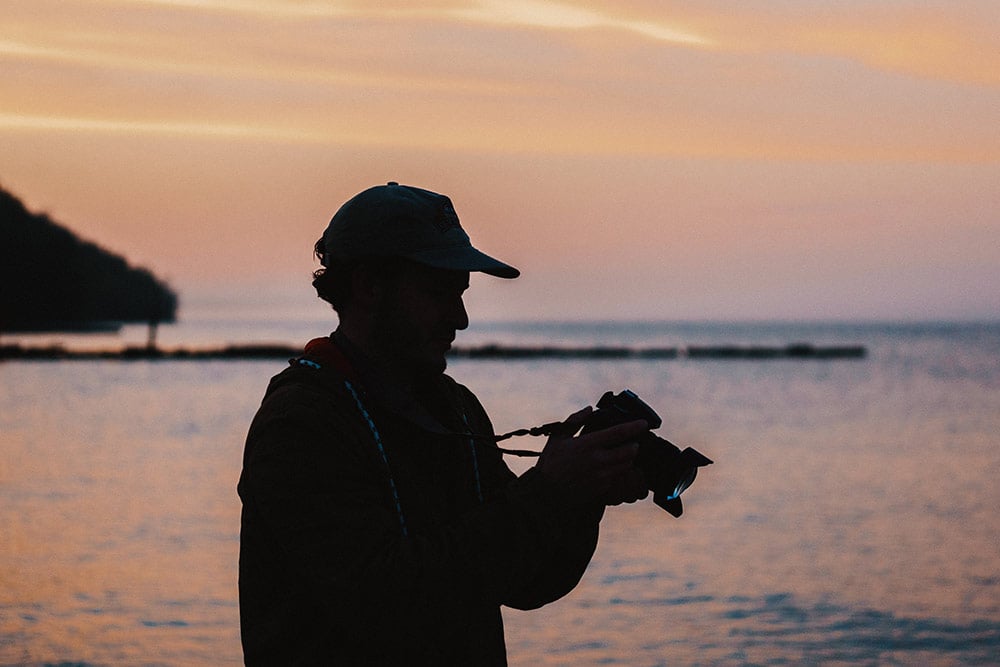Nikon unveils its first full-frame video camera in the new Z Cinema lineup, the Nikon ZR. The result of Nikon’s acquisition of RED, it marks the brand’s first true incursion into the professional cinema camera segment, aiming to appeal to both content creators and film professionals.
Offered at $2,196, the ZR combines compactness, video up to 6K 60p RAW with professional codecs (including REDCODE RAW), 5-axis stabilization, and even 32-bit float audio recording. A body that shakes up the compact cinema camera segment with a very compelling price point. We had the chance to get a hands-on at its announcement.
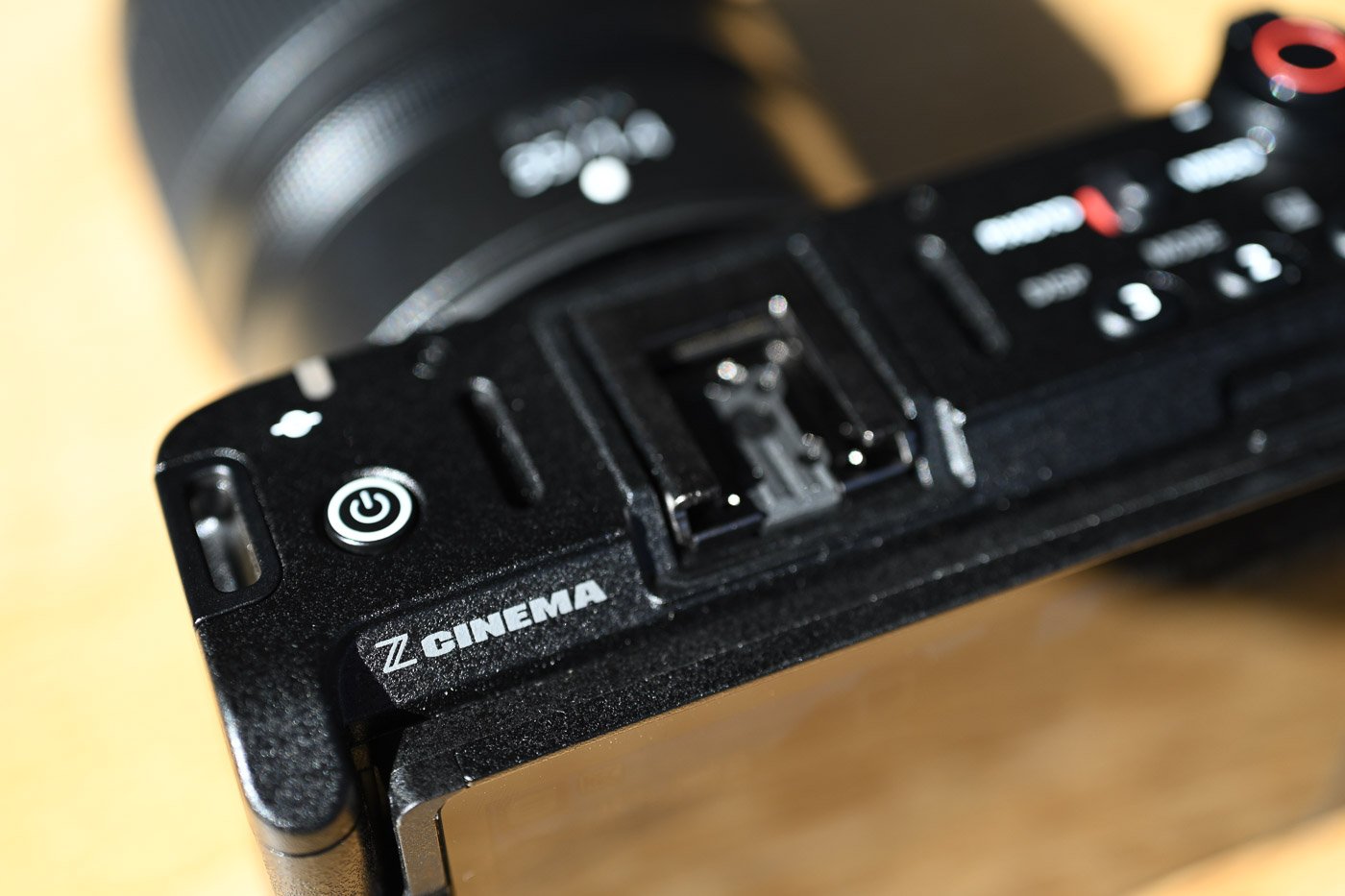
Sommaire
- A new Z Cinema lineup
- Compact ergonomics and a very sharp XXL screen
- Video performance: internal 6K 60p RAW and REDCODE RAW
- RED colors and wide dynamic range
- Audio: internal 32-bit float and OZO Audio
- 5-axis stabilization and thermal management
- Battery life, connectivity and accessories
- Price and availability of the Nikon ZR
- Our first take on the Nikon ZR
A new Z Cinema lineup
Since Nikon’s acquisition of RED in 2024, the question was how the Japanese brand would integrate that cinema expertise into its mirrorless bodies. The answer materializes today with the ZR, the first representative of the Z Cinema range. Unlike the RED Komodo or V-Raptor recently adapted to the Z mount, this time it’s a genuine Nikon product.
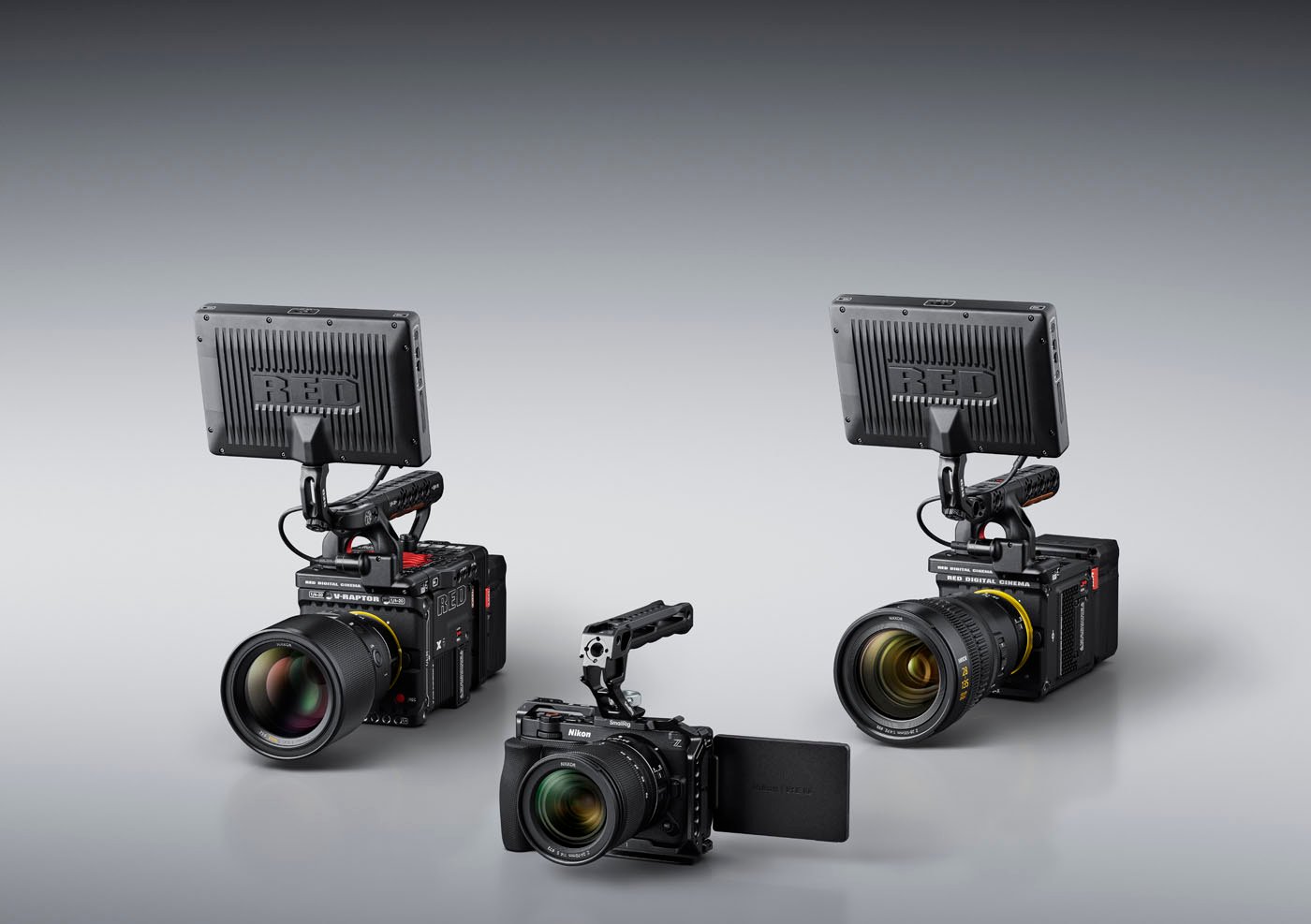
The promise: a run-and-gun video body ready to use right out of the box, able to evolve from a light documentary setup to a fully rigged cinema build.
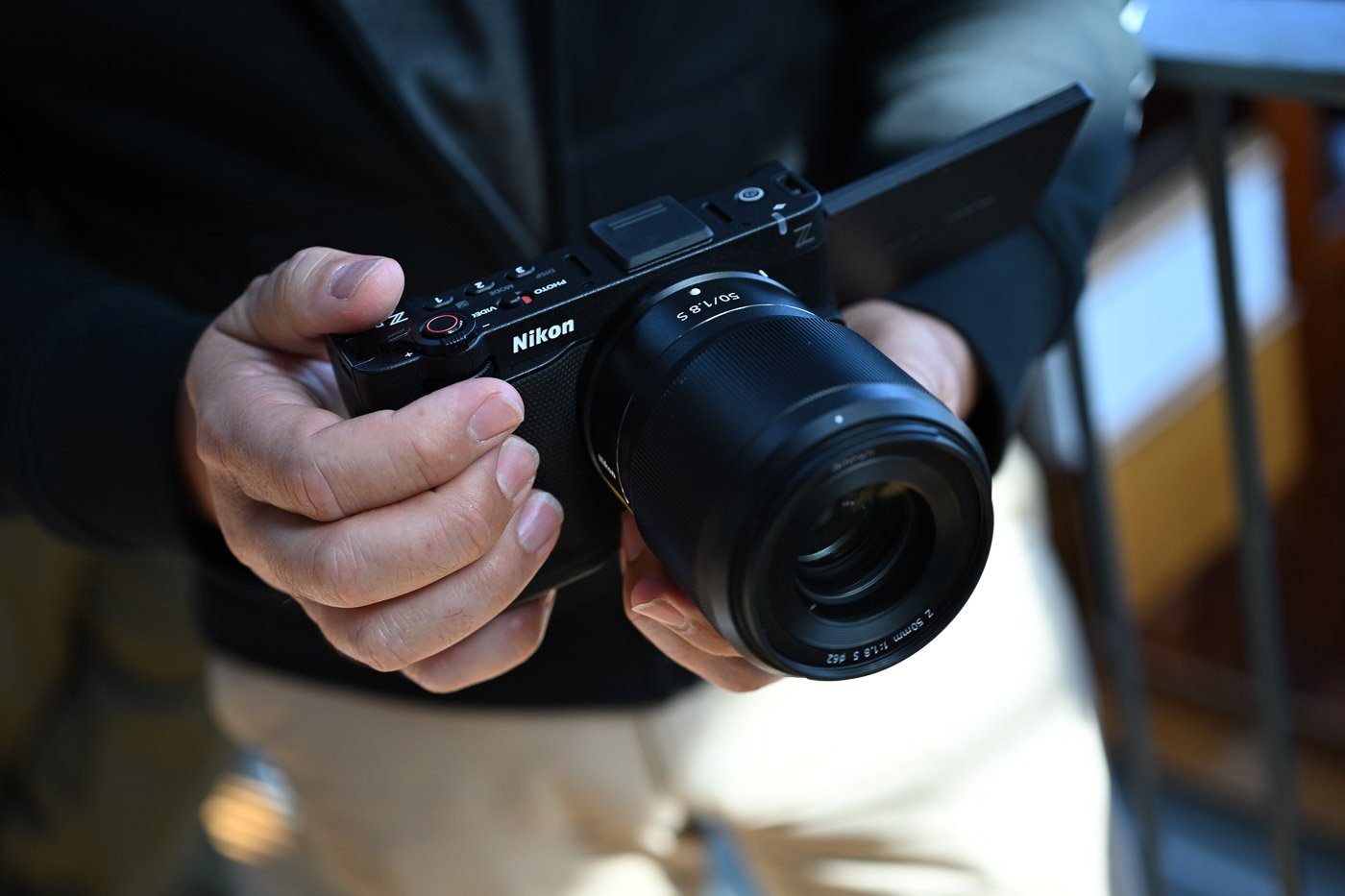
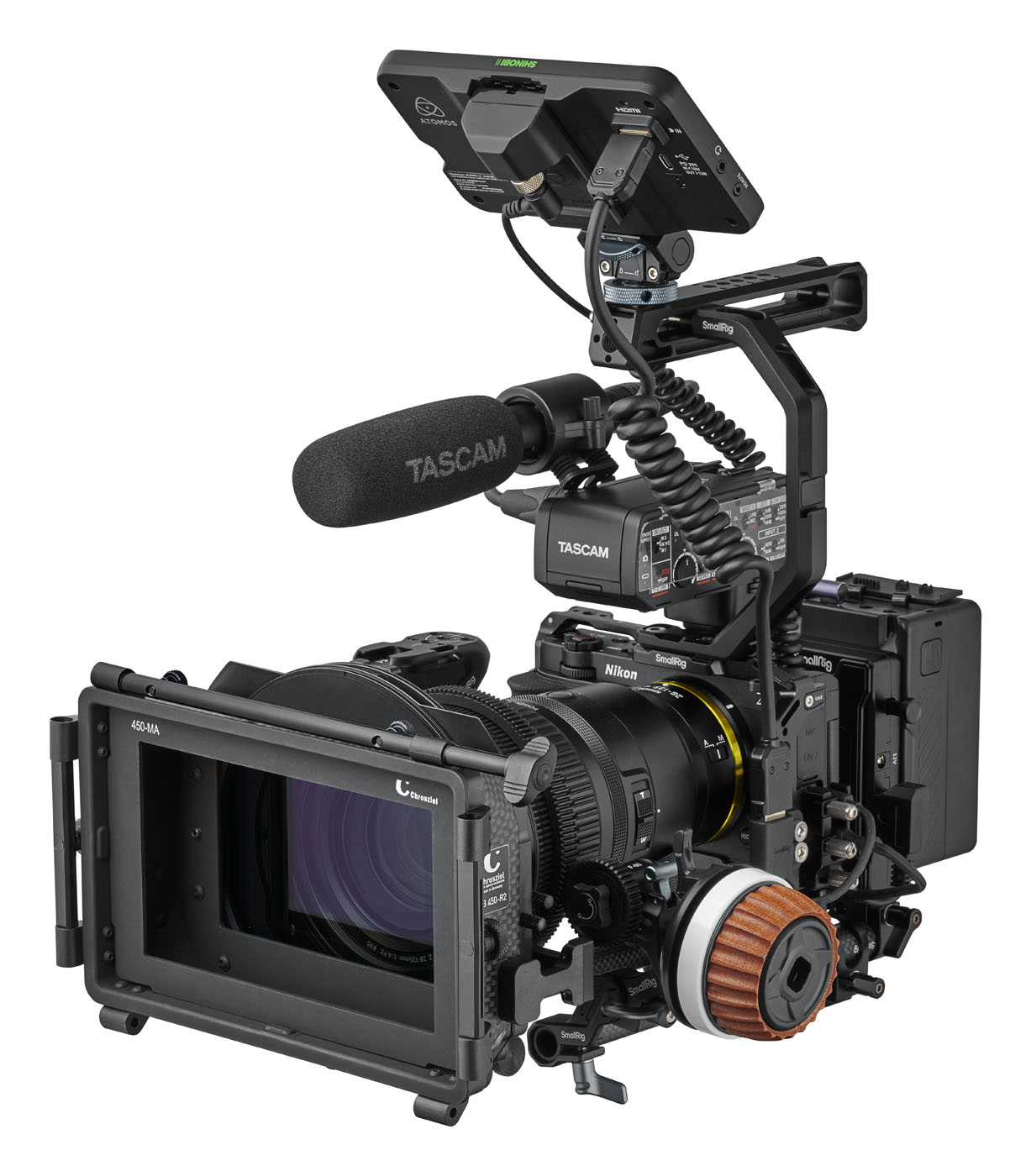
Compact ergonomics and a very sharp XXL screen
The Nikon ZR features a very compact design without an EVF, video-centric. The small integrated grip provides adequate handling, though it’s far from a Z6 III. While the body doesn’t offer, as with Sony or Canon, 1/4” tripod sockets directly on the shell for accessories, it remains fully accessorizable thanks to several partnerships, including SmallRig and Tascam.
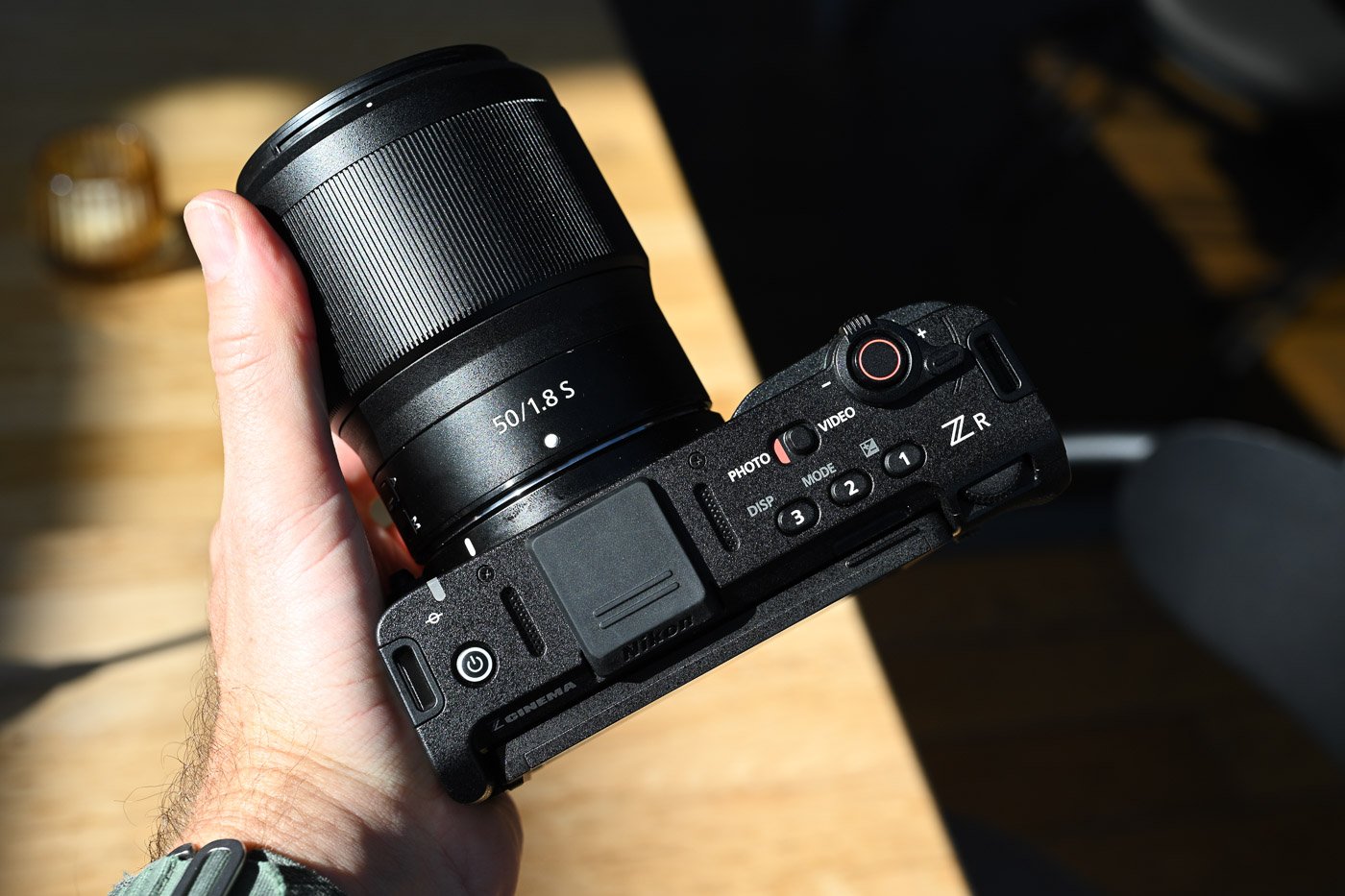
In terms of dimensions, the body measures approximately 134 mm wide, 80.5 mm high and 49 mm deep. On the scale, the Nikon ZR is a featherweight 540 g bare and 630 g with battery and card. The magnesium-alloy body is just as robust and weather-sealed as a Z6 III.
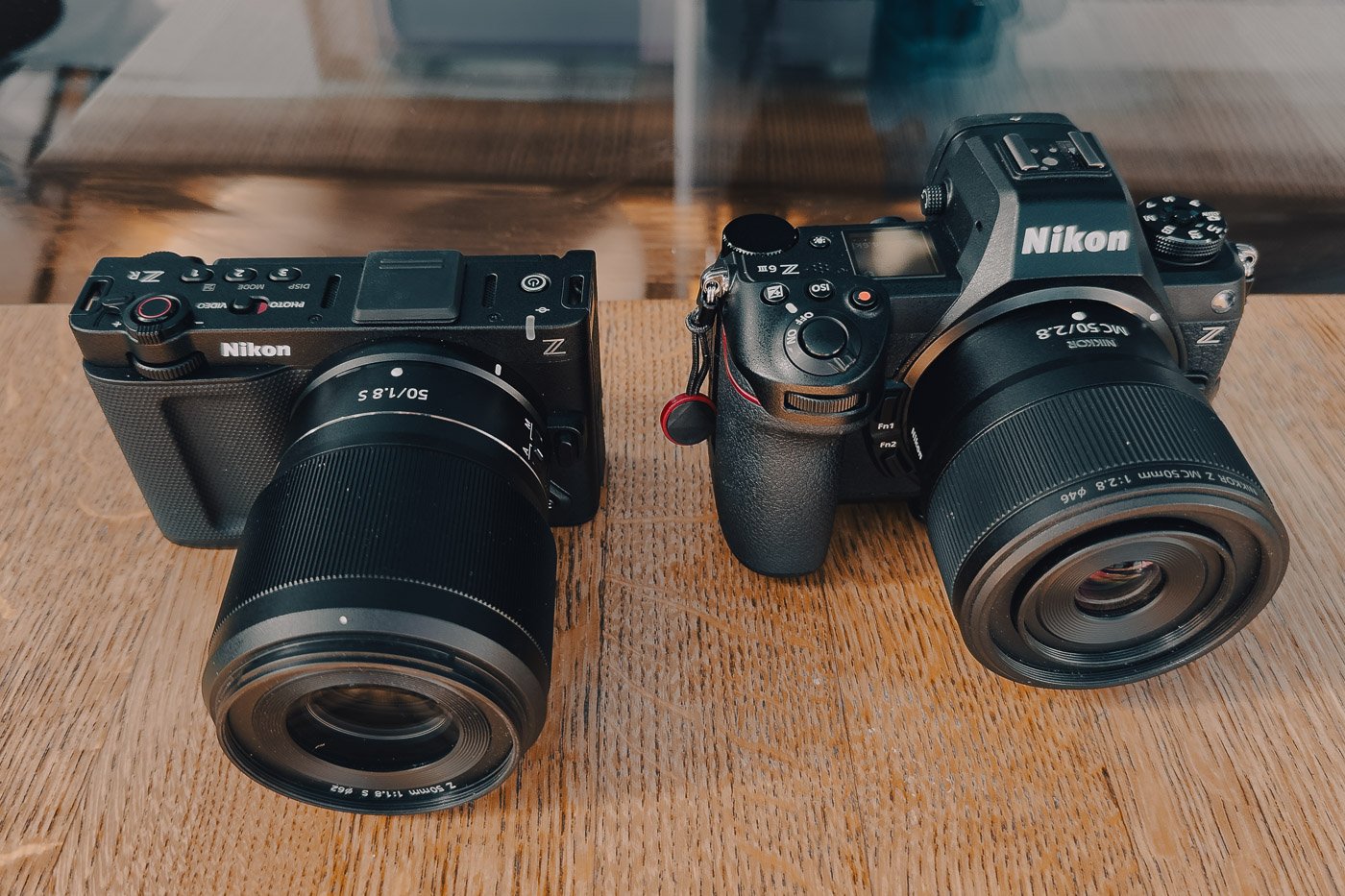
While the ZR forgoes the viewfinder, its 4-inch LCD on a swivel with a 16:10 aspect ratio is one of its key strengths. It’s the largest screen on the market, with a comfortable 3.07-MP resolution (though less than the Canon EOS R3). It’s also very bright (around 1,000 nits) and covers the DCI-P3 color space. Simply put, it’s close to what you’d expect from a high-end external monitor.
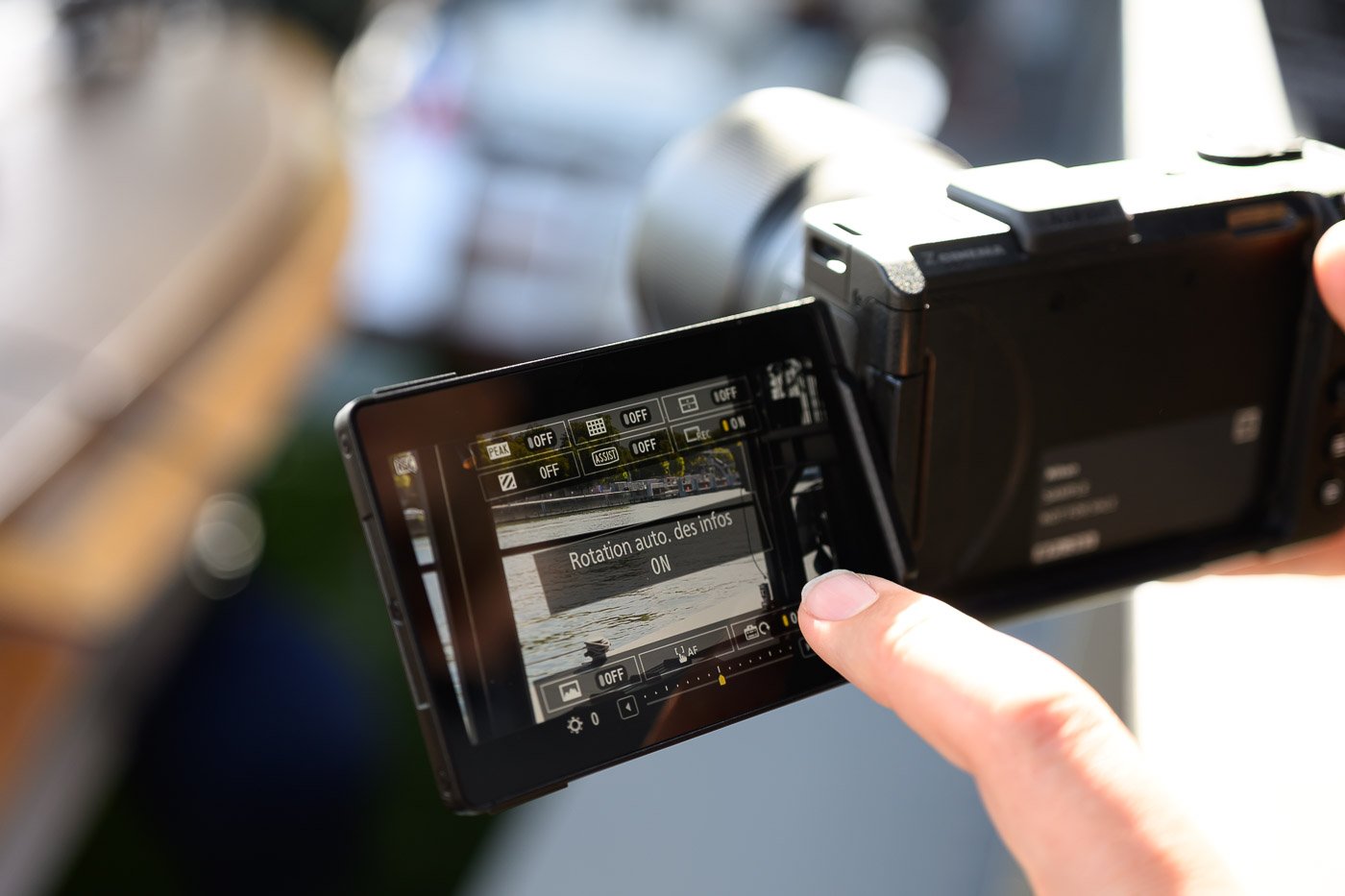
Nikon goes even further by offering native display of 10 3D LUTs in 17, 33 and even up to 65 points, giving videographers a faithful preview of the final look directly on the body.
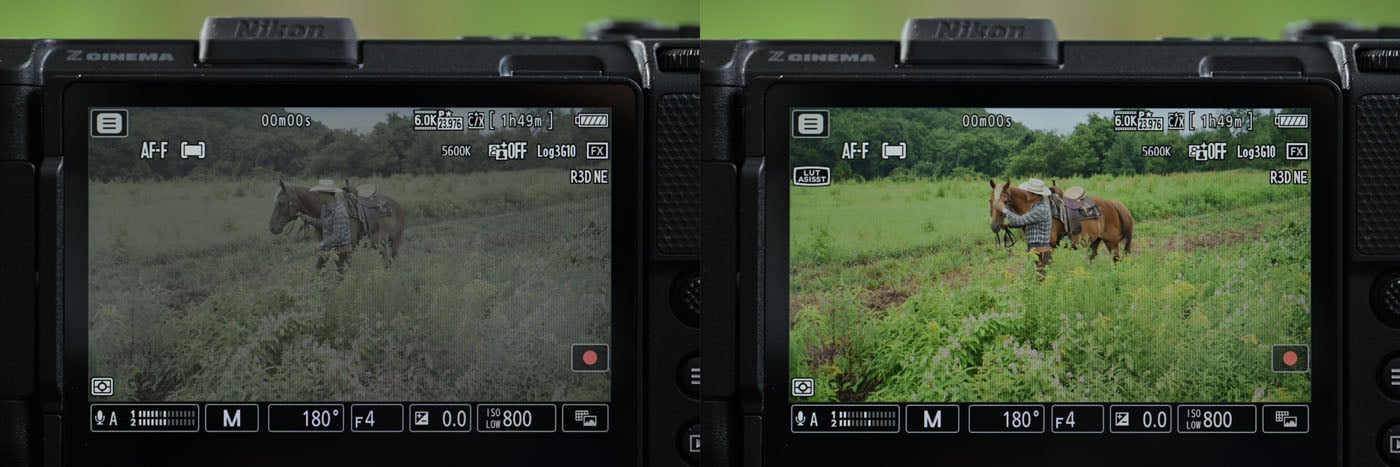
As for controls, the Nikon Z R introduces some interesting novelties. Power is now via a push button, and a zoom rocker sits just beneath the video trigger — it can also be used to capture photos in Photo mode. On the top plate, there are three customizable buttons plus two click-stopped dials (front and rear), complemented by a front-facing REC button.
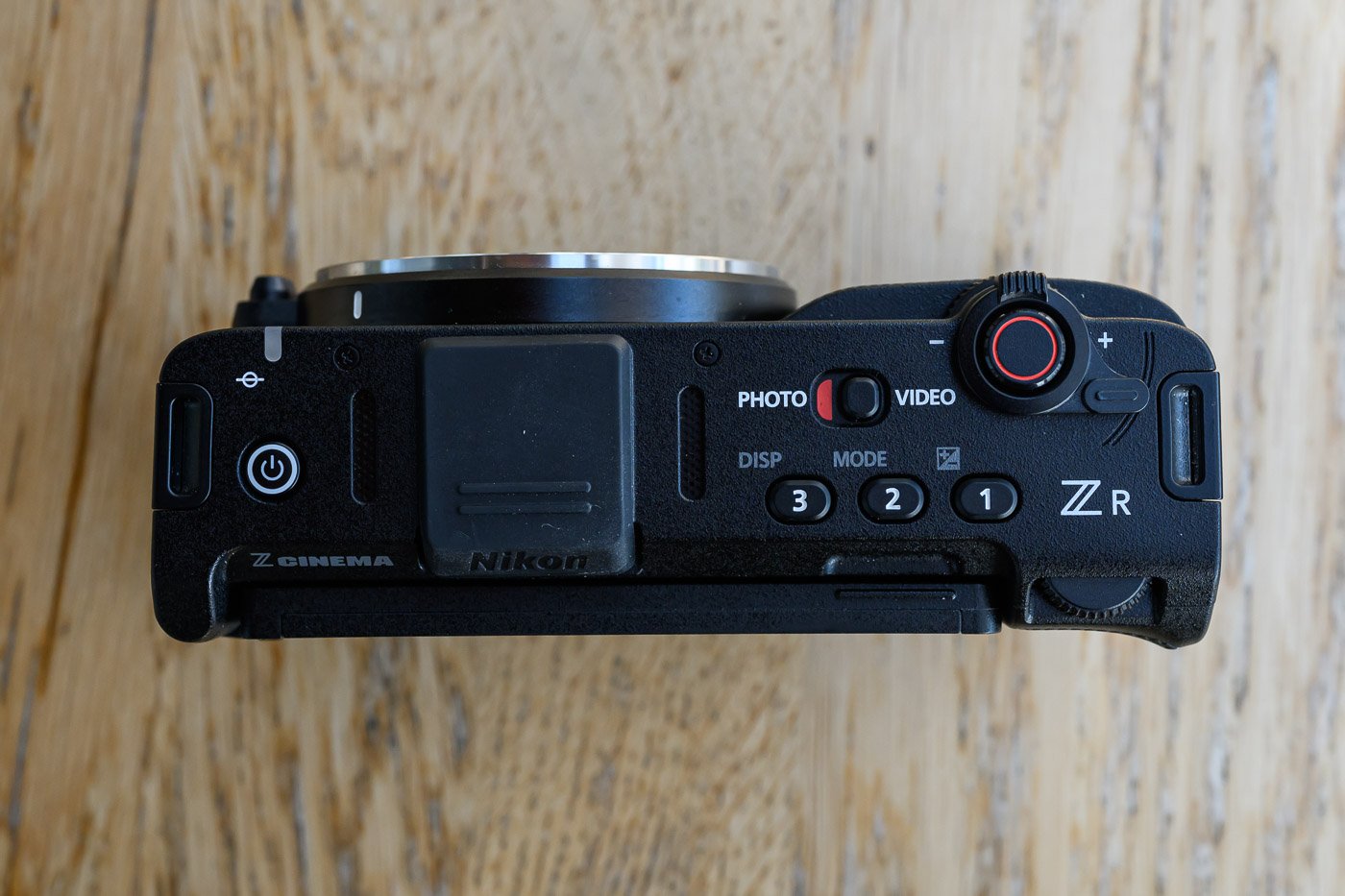
On the back, the very large screen takes up almost the entire surface of the body, but Nikon wisely added a joystick, along with two other physical buttons to play videos or access settings. As usual with Nikon, all controls are fully customizable, with a big emphasis on touch interactions via the screen. With its 16:10 format, it lets you display settings in the lower part of the image without covering the video.
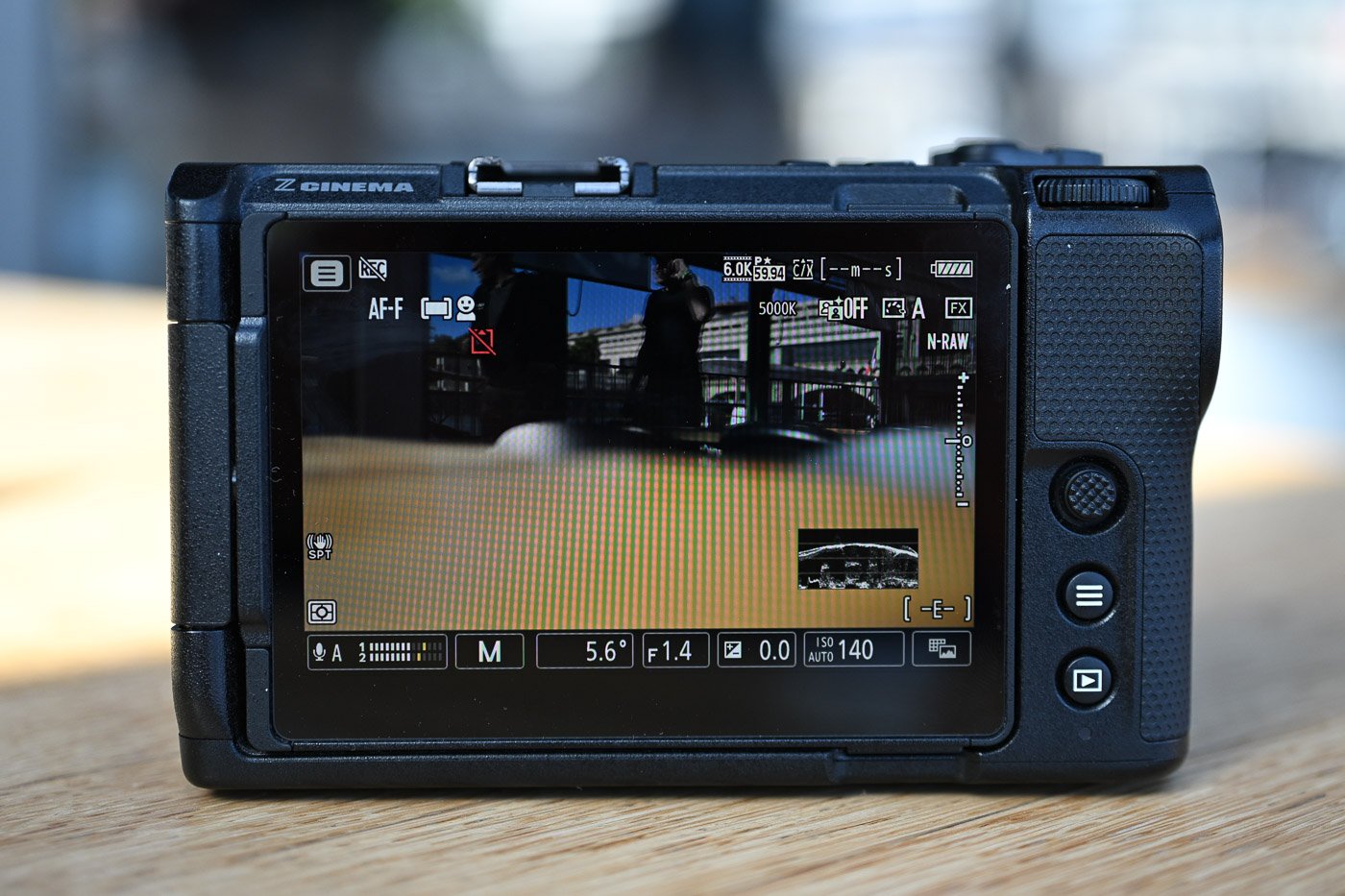

The camera also includes menus and buttons specifically designed for video, as well as the ability to record in native vertical mode, making it easier to produce content for social networks. Menus also display vertically in video, a first for Nikon, which previously only offered orientation in Photo mode.
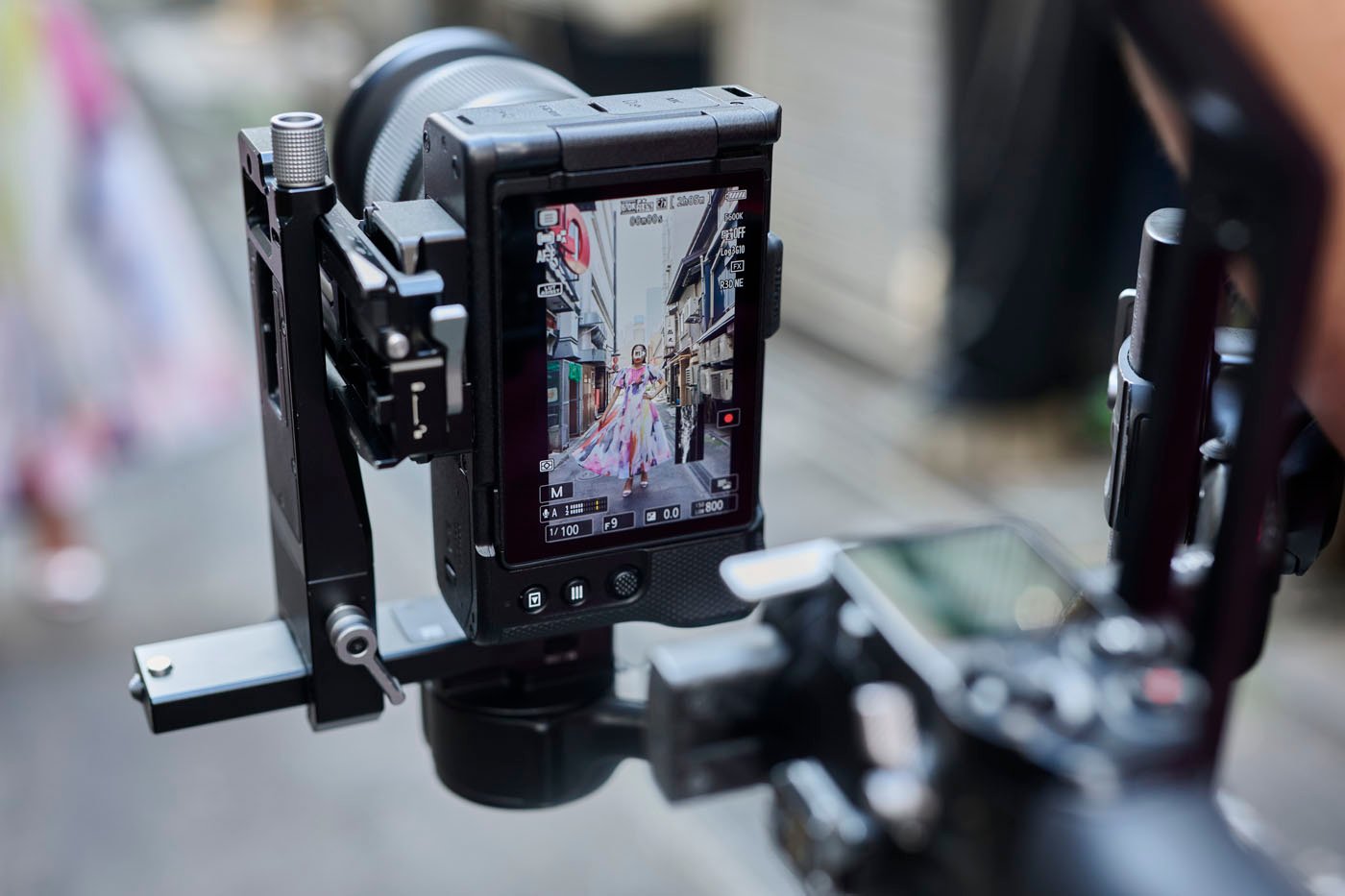
Here is the list of the Nikon ZR’s technical specifications:
- sensor: full-frame semi-stacked BSI CMOS 24.5 MP
- low-pass filter: yes
- processor : Expeed 7
- stabilization : 5-axis IBIS, up to 7.5 stops in the center, 6 stops at the edges
- electronic viewfinder : N.A.
- screen: 4” fully articulated touch LCD (3.07 MP), DCI-P3
- autofocus : hybrid phase/contrast-detect AF
- AF points : 273
- AF coverage : 88% vertical and 96% horizontal
- auto detection & tracking : humans (body, head, eye), animals (dogs, cats, birds), vehicles (cars, motorcycles, trains, airplanes)
- AF range : from −10 to 19 EV
- video sensitivity: 100 to 51,200 ISO (expandable to 204,800 ISO) / Dual native ISO: 800 / 6400 ISO
- burst : N/A
- shutter : 30 s – 1/16,000 s (electronic)
- video : 6K up to 60p, 4K up to 120p, Full HD up to 240p
- video compression : N-RAW (12-bit), R3D NE (12-bit), Apple ProRes RAW HQ (12-bit), Apple ProRes 422 HQ (10-bit), H.265/HEVC (8-bit/10-bit), H.264/AVC (8-bit)
- video color profiles : SDR, HLG, N-Log, Log3G10
- cooling : passive
- storage : 1x CFexpress Type B and 1x microSD UHS-I
- wireless connectivity : N/A
- battery : EN-EL15c
- battery life : N/A
- USB charging : yes, USB-C
- weather-sealing : yes
- dimensions : 134 × 80.5 × 49 mm
- weight : 630 g (with battery and memory card)
- launch price : $2196
Video performance: internal 6K 60p RAW and REDCODE RAW
Under the hood, the ZR carries the 24.5-MP full-frame sensor already seen in the Nikon Z6 III — a semi-stacked sensor that should offer reduced rolling shutter and a responsive hybrid AF (with 273 selectable AF points).
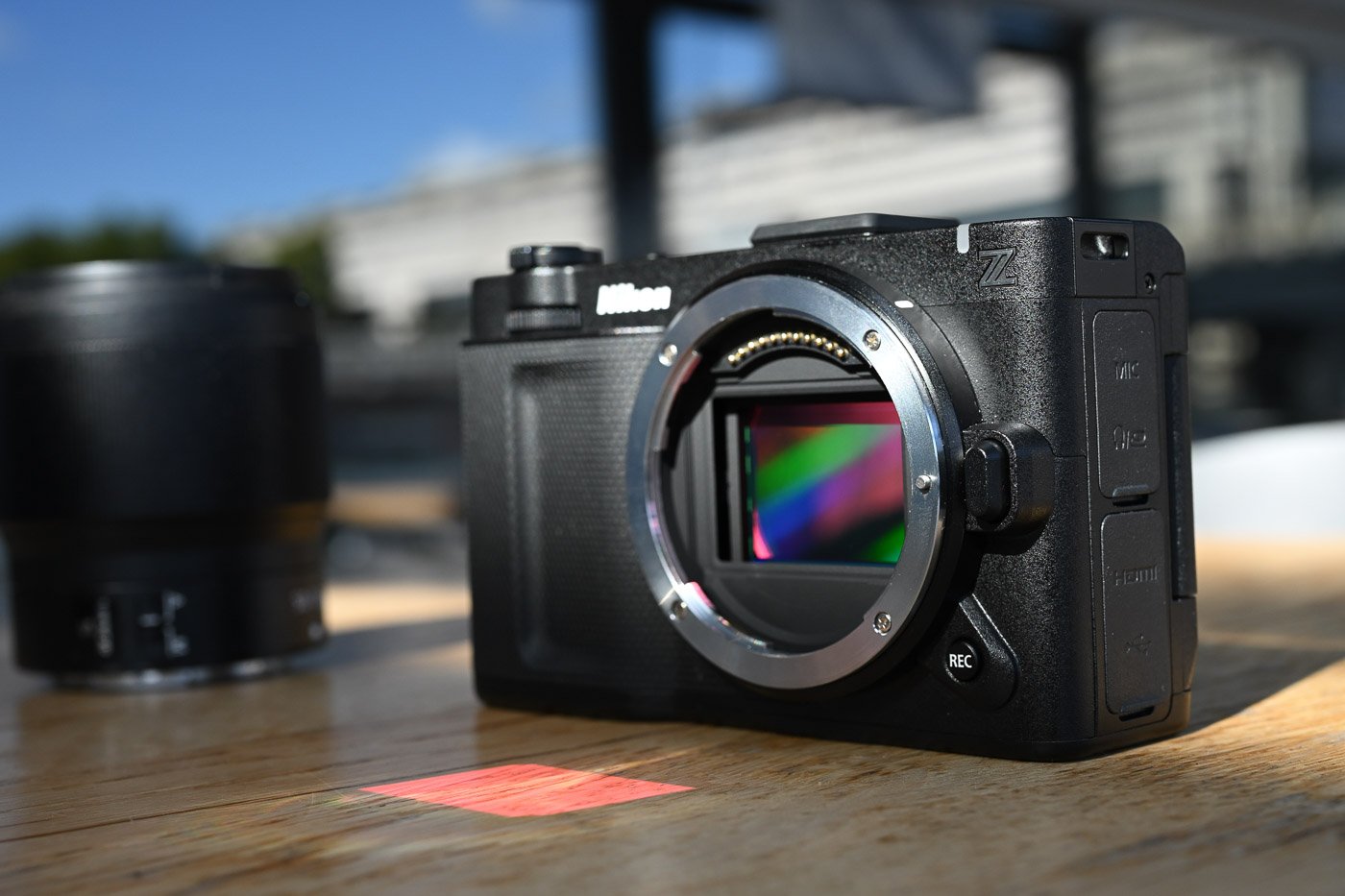
This sensor is paired with the Expeed 7 processor. The camera can thus detect and track the same subjects as the Nikon Z6 III: humans, animals (dogs, cats and birds) as well as vehicles (motorcycle, car, bicycle, train, airplane).
As a result of the RED acquisition, the ZR also integrates REDCODE RAW (R3D NE, 12-bit vs 16-bit on RED cameras), a first on a Nikon body, ensuring color consistency with RED cameras.
There’s also N-RAW HQ (12-bit), which maintains a bitrate comparable to REDCODE for lighter files. Nikon also includes Apple ProRes RAW HQ (12-bit), popular in Mac post-production pipelines, as well as ProRes 422 HQ, 10-bit H.265 and 8-bit H.264 for lighter use cases.
In terms of resolutions and frame rates, the camera offers:
- 6K up to 60p in RAW,
- 4K up to 120p in RAW (Super35 DX crop),
- Full HD up to 240p (H.264) with a 1.05× crop
Note that the body, designed for video, omits the mechanical shutter.
RED colors and wide dynamic range
The true signature of this camera is the RED color science, integrated for the first time in a Nikon product. You get Log3G10 and the RED Wide Gamut RGB color space, wider than DCI-P3, giving more headroom for grading.
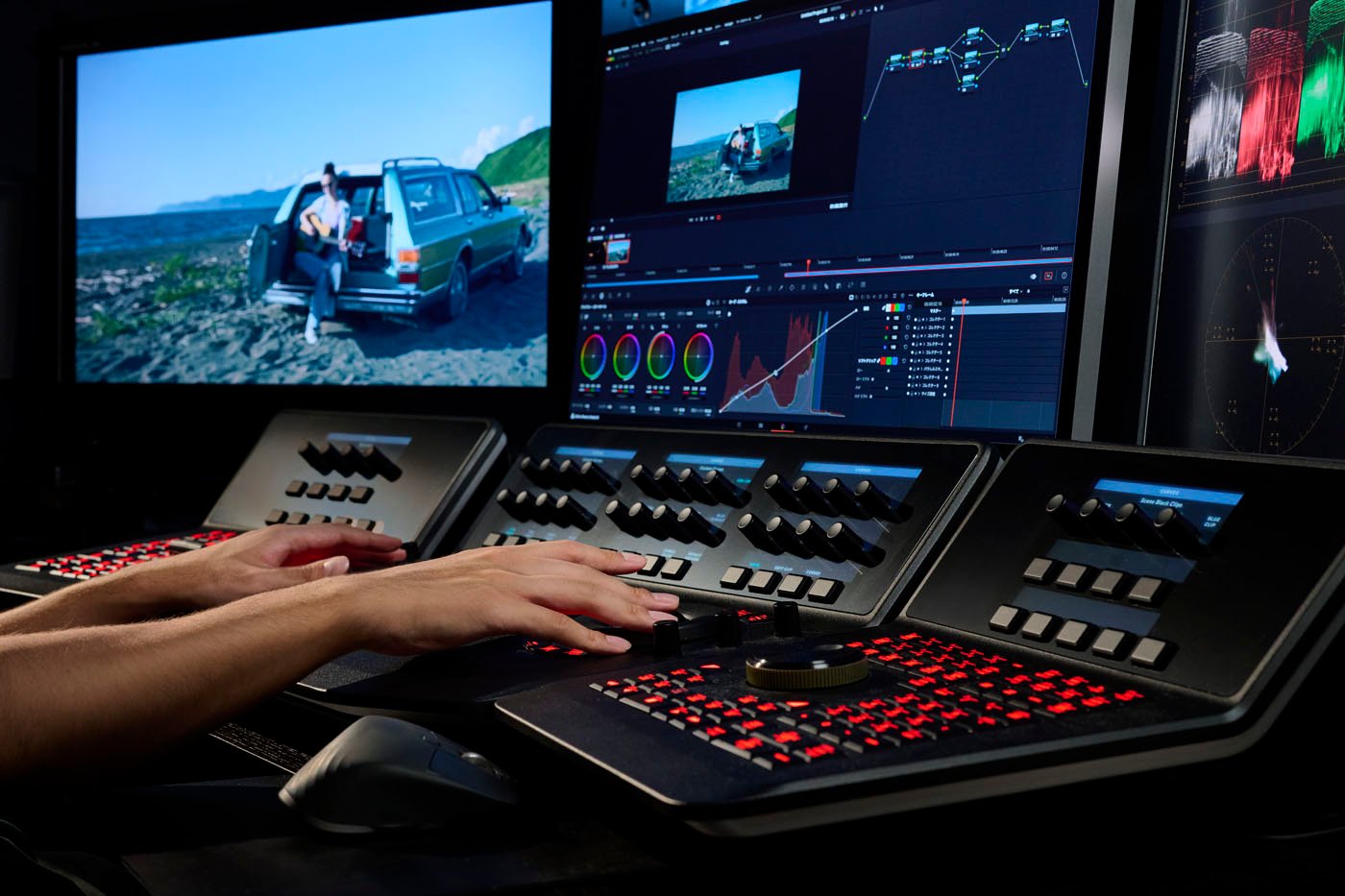
The camera also benefits from dual native ISO (800 and 6400 ISO), ensuring a dynamic range above 15+ stops even in low light (in Log3G10 only).
You can load up to 9 additional LUTs/video presets to adapt the look to different styles (cinematic, slow motion, portrait, astro…).
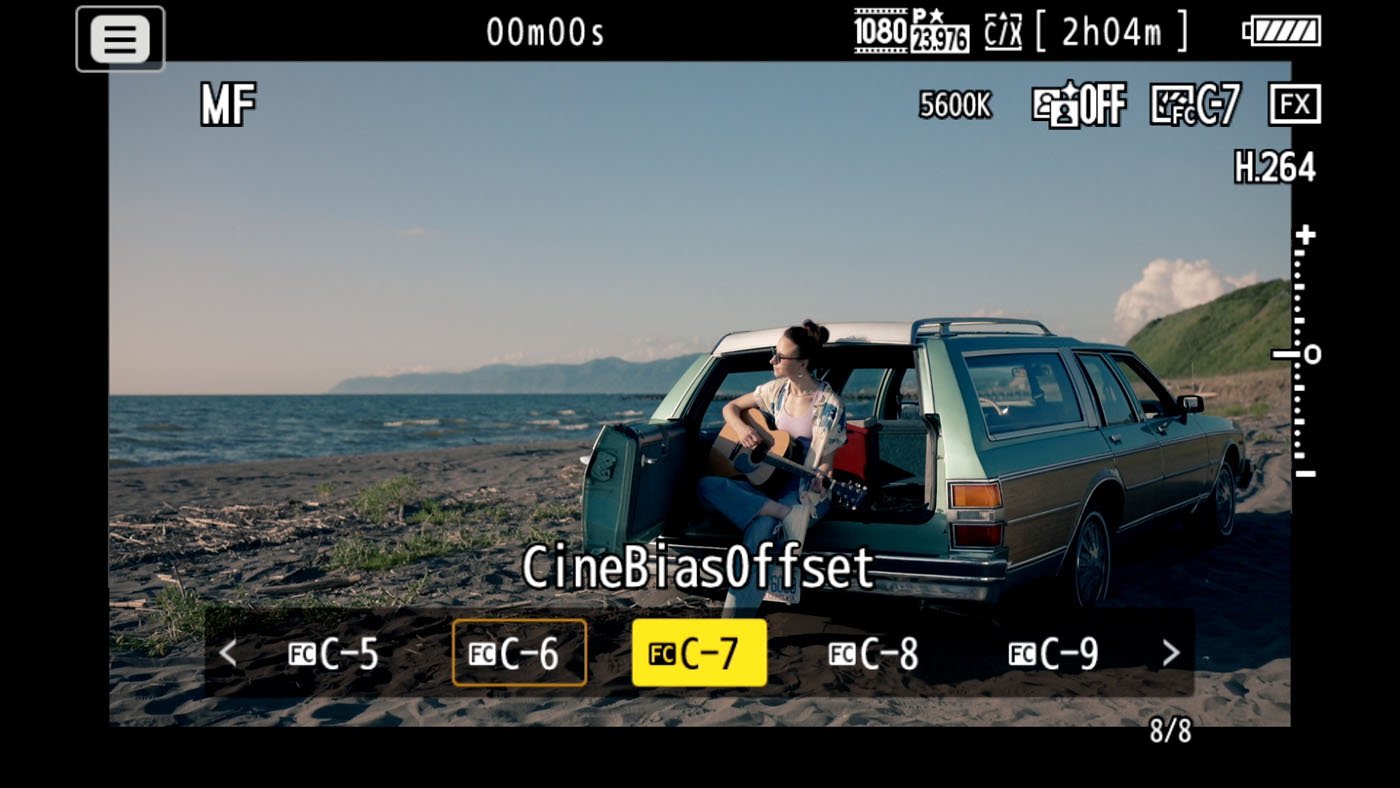
Of course, you’ll find everything you expect from a video-centric body, such as the red recording frame, waveforms, zebras, shutter speed control via shutter angle (from 5.6° to 360°), etc. A focus breathing reduction function enables smoother transitions, even though some Nikkor Z lenses with multi-motor AF systems already helped reduce the phenomenon.
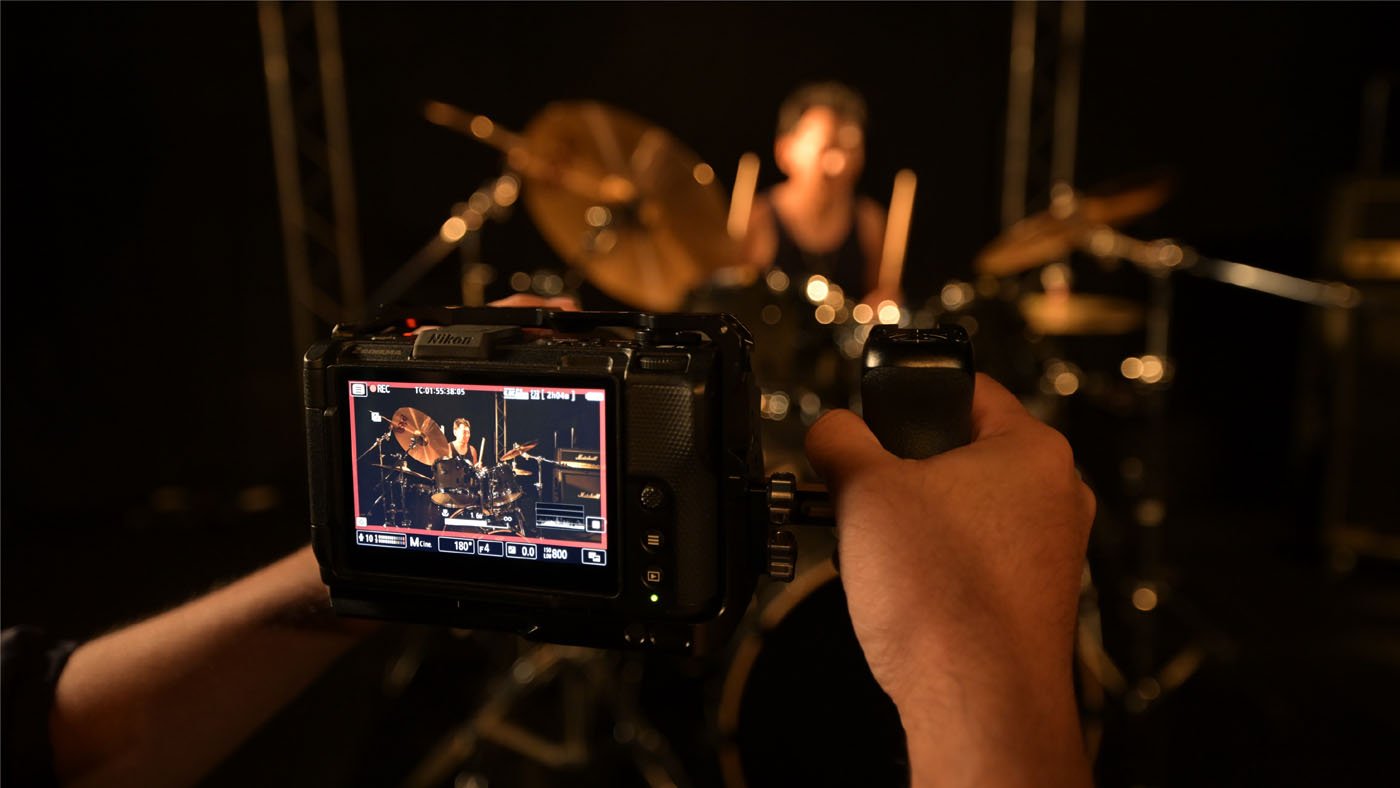
Audio: internal 32-bit float and OZO Audio
Beyond the image, the Nikon ZR also innovates in audio. It’s the first camera in this segment to offer internal 32-bit float recording. This technology captures sound without clipping or excessive noise, providing great latitude in post-production.
The body includes three internal mics with a 72 dB signal-to-noise ratio, and OZO Audio technology developed by Nokia, enabling spatialized sound (directional, omnidirectional or binaural capture).
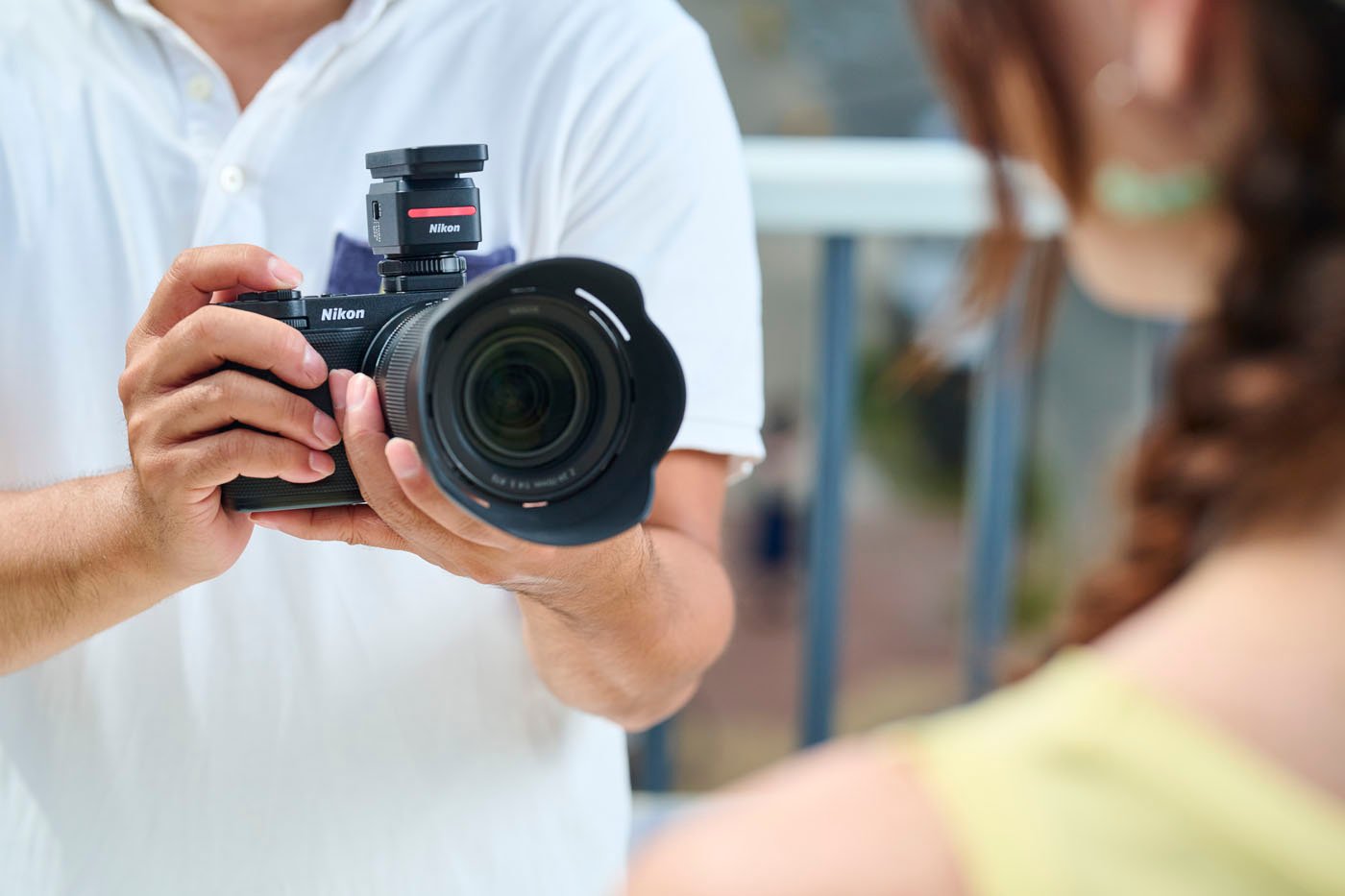
In parallel, Nikon is also launching a new external mic (ME-D10) compatible with 32-bit float, which connects directly to the camera without extra cables thanks to a new digital hot shoe, a first for Nikon. It offers a higher SNR than the internal mic, at 77 dB.
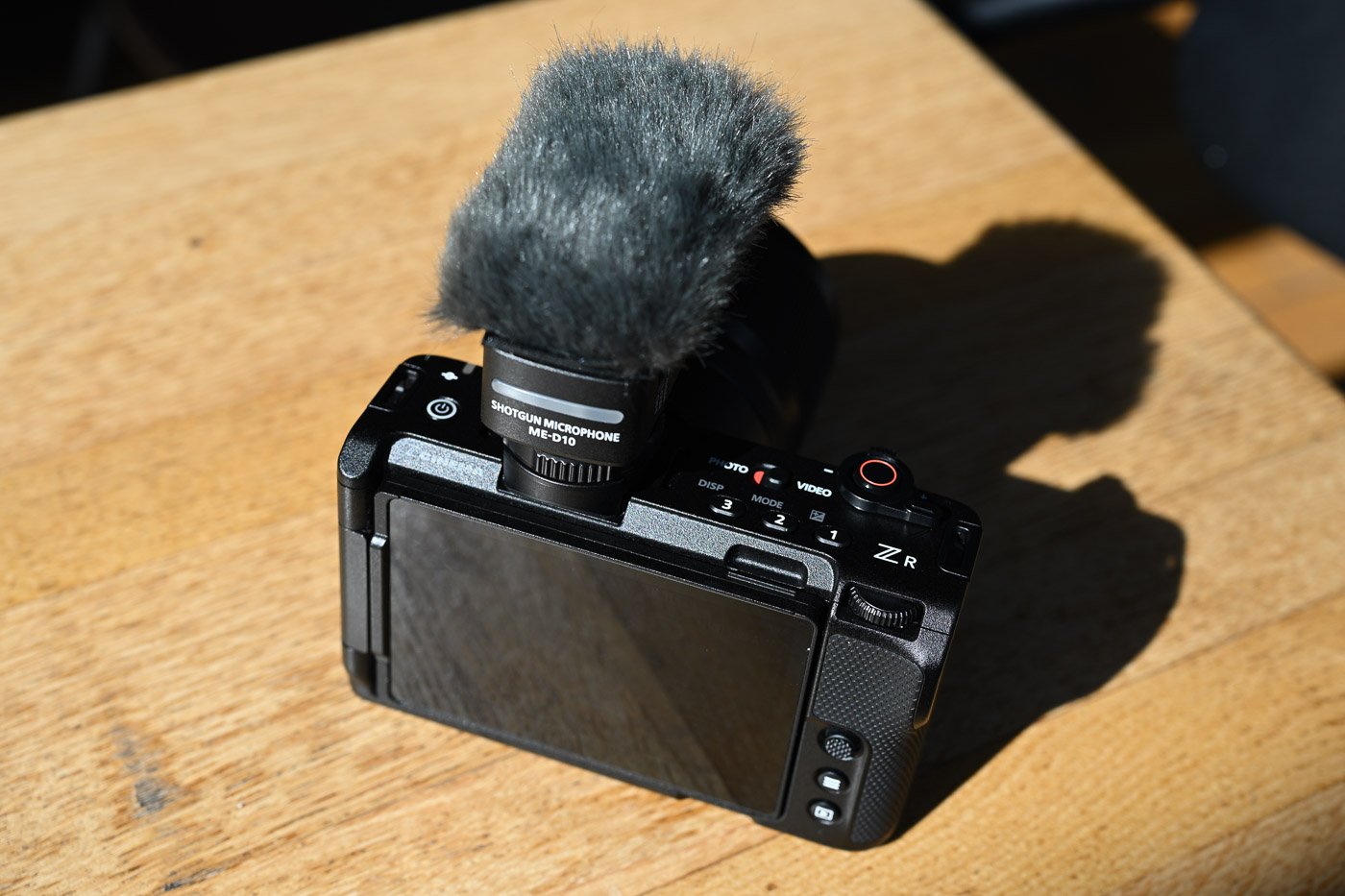
5-axis stabilization and thermal management
The ZR inherits the Z6 III’s 5-axis IBIS, with a Focus Point VR mode that improves stabilization at the active focus point. Result: up to 7.5 stops of compensation in the center and 6 stops at the edges. The camera also supports Syncro VR with compatible Nikkor Z lenses.
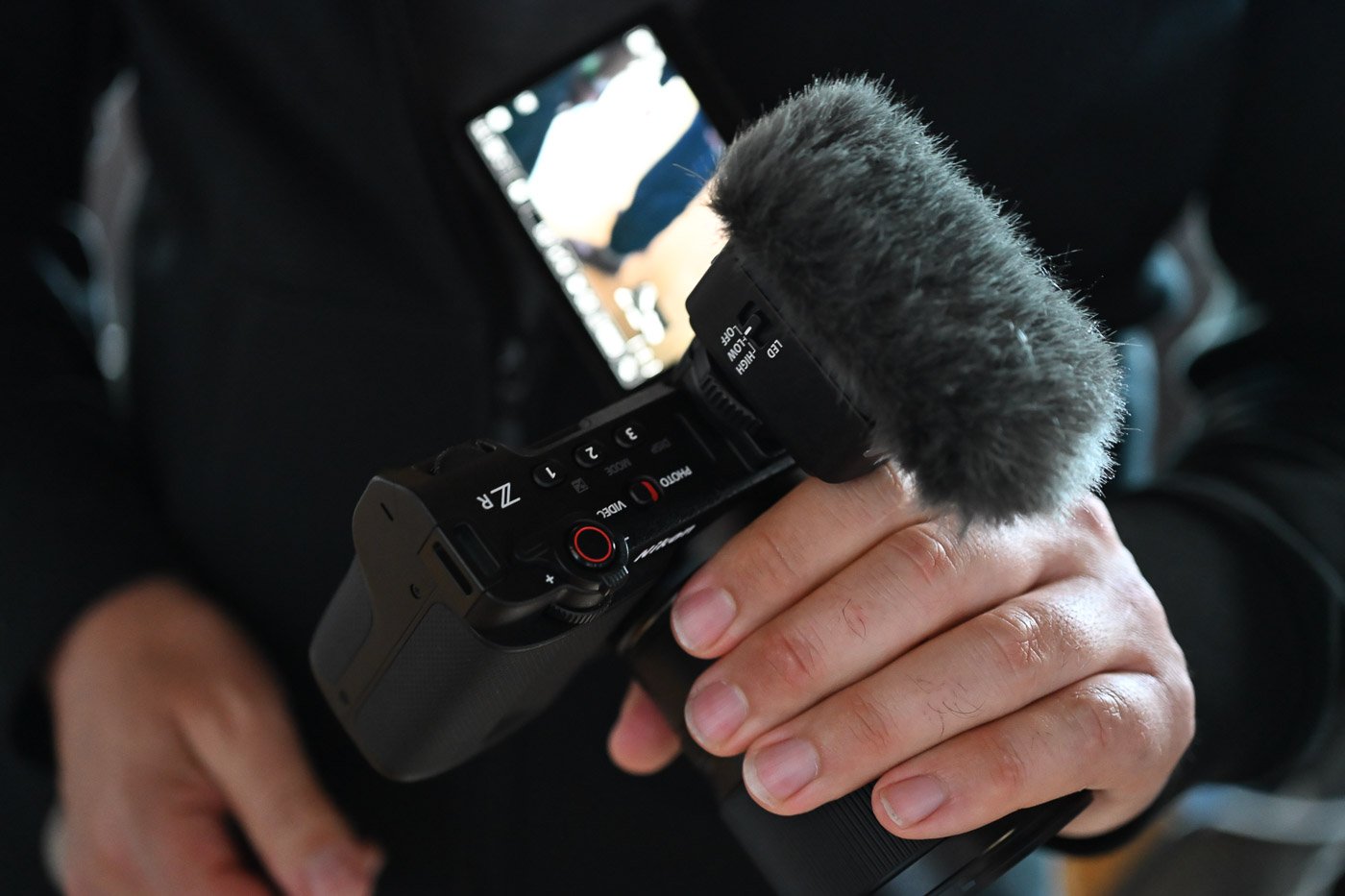
Regarding heat dissipation, Nikon claims strong performance despite the absence of active cooling. Thus, it should be possible to record for up to 125 min in 4K60p (H.265 8-bit) on AC power, and 95 minutes on battery. Figures to be verified in the field, especially with CFexpress Type B recording, which tends to heat up quickly at heavier formats than 6K.
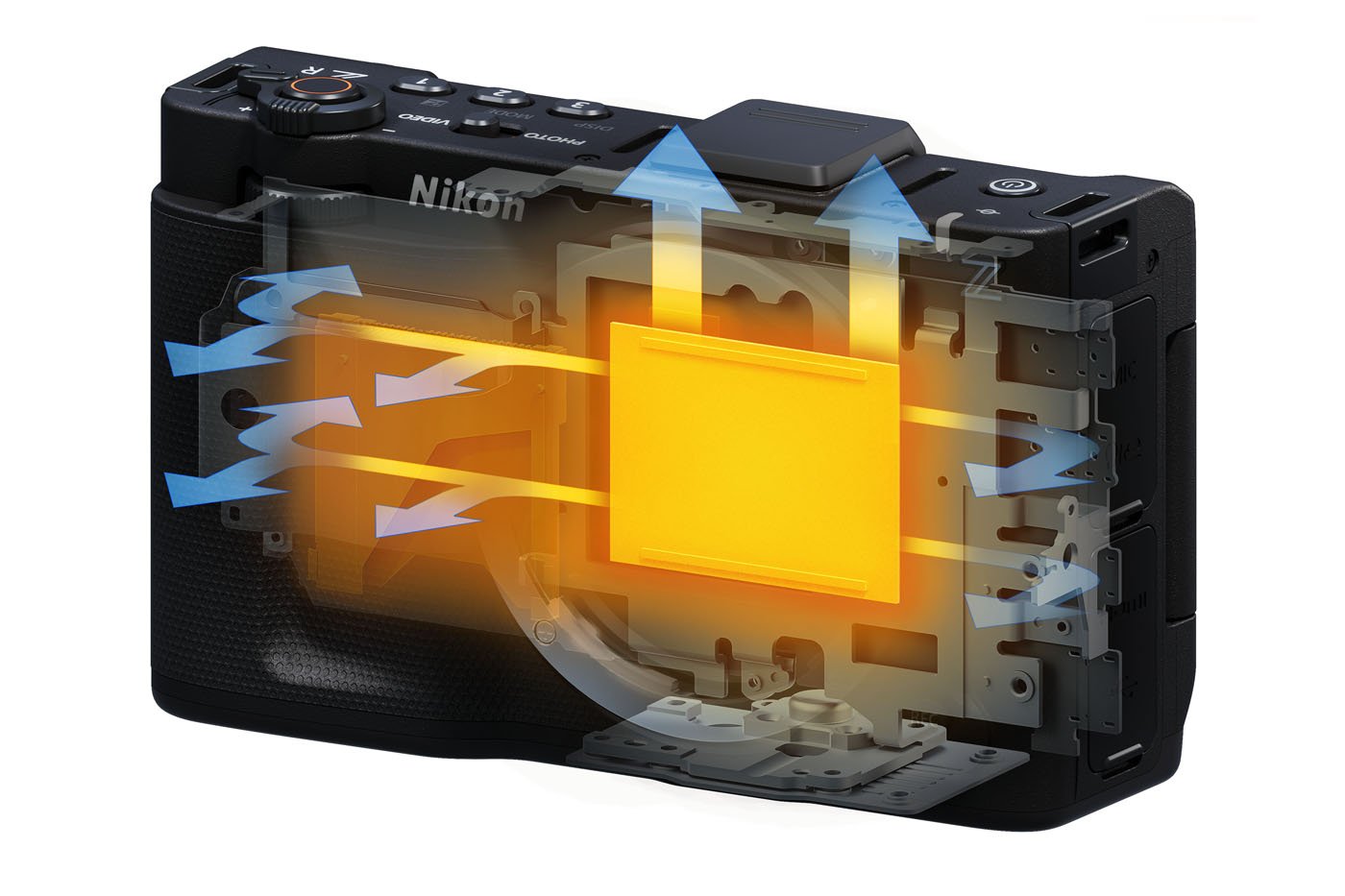
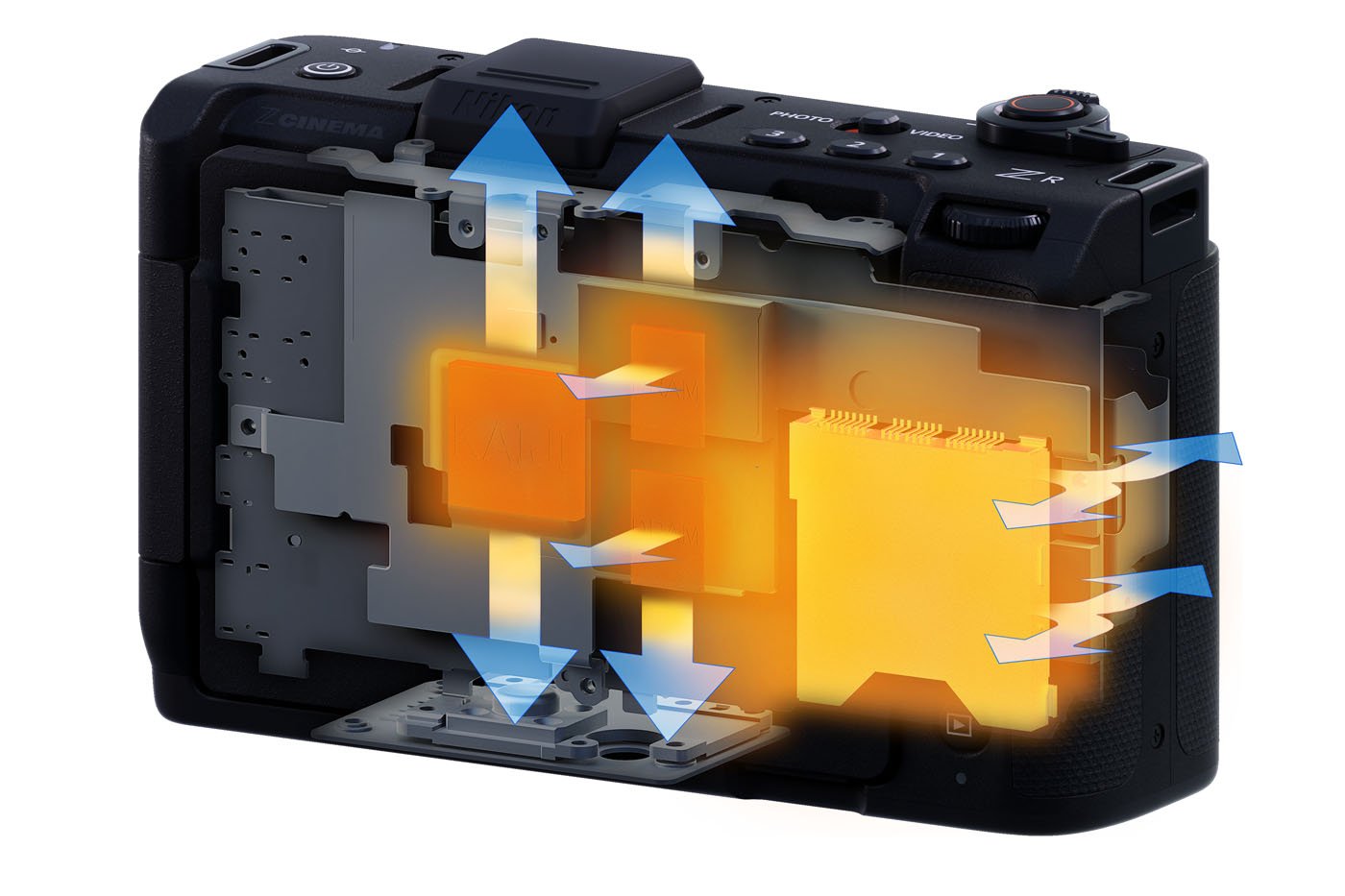
Battery life, connectivity and accessories
The Nikon ZR offers a dual slot CFexpress Type B + microSD UHS-I, an HDMI Type-D connector, a USB-C (3.2) port, headphone and mic jacks, as well as Frame.io compatibility via the NX Mobile Air app. Note, however, that if you plug in an HDMI recorder, you won’t be able to output a RAW feed according to Nikon.
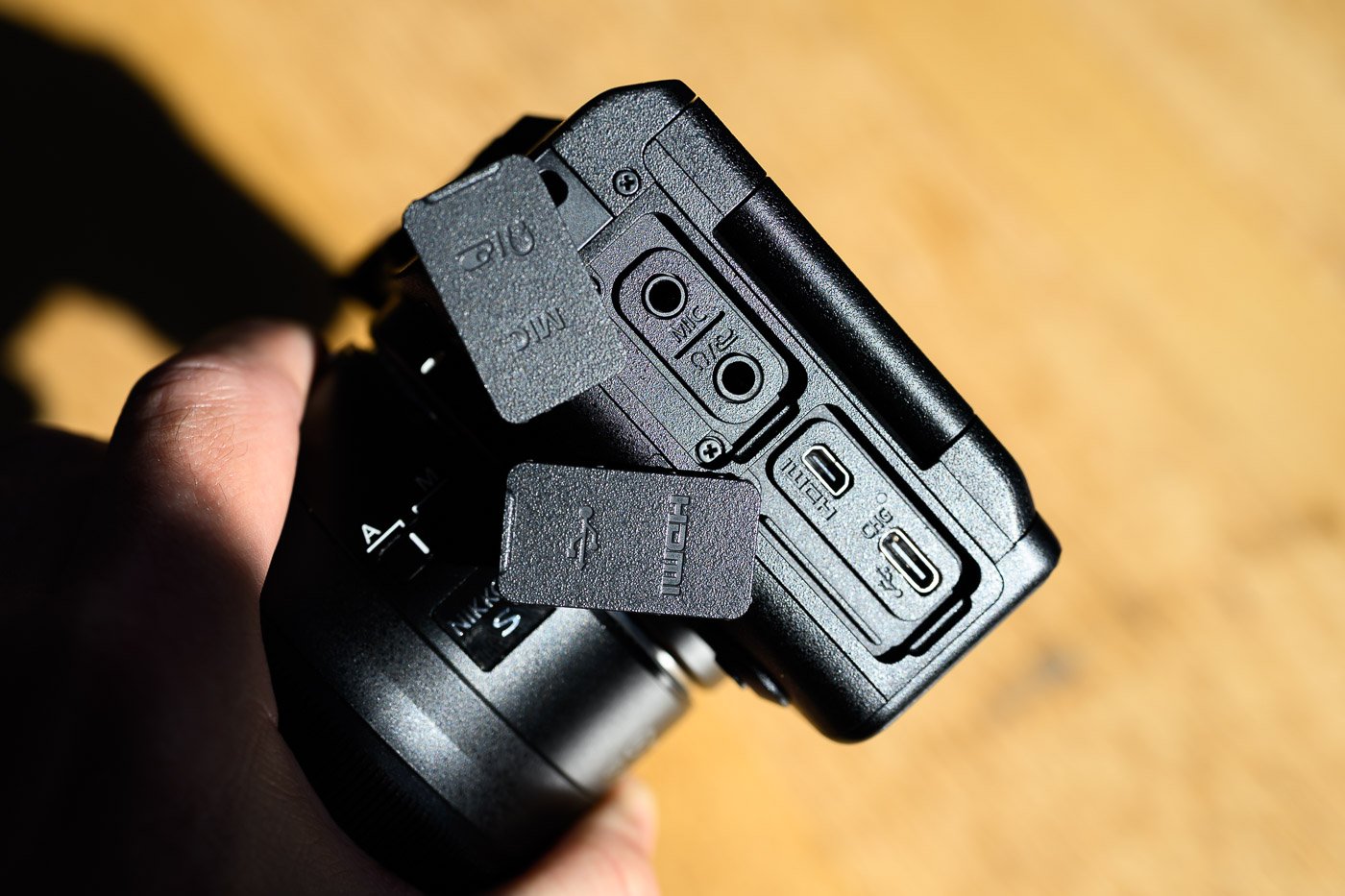
Surprisingly, Nikon gives no battery-life rating for its camera. It uses the same EN-EL15c batteries as other photo bodies, charges via USB-C and can be powered (without charging) over USB-C. However, the 95-minute 4K60p recording time without overheating on battery might give a rough idea.
Finally, the Z mount ensures broad compatibility with Nikon’s lens lineup, but also with Sony or Sigma lenses via adapters such as the Megadap ETZ-21 Pro+ adapter.
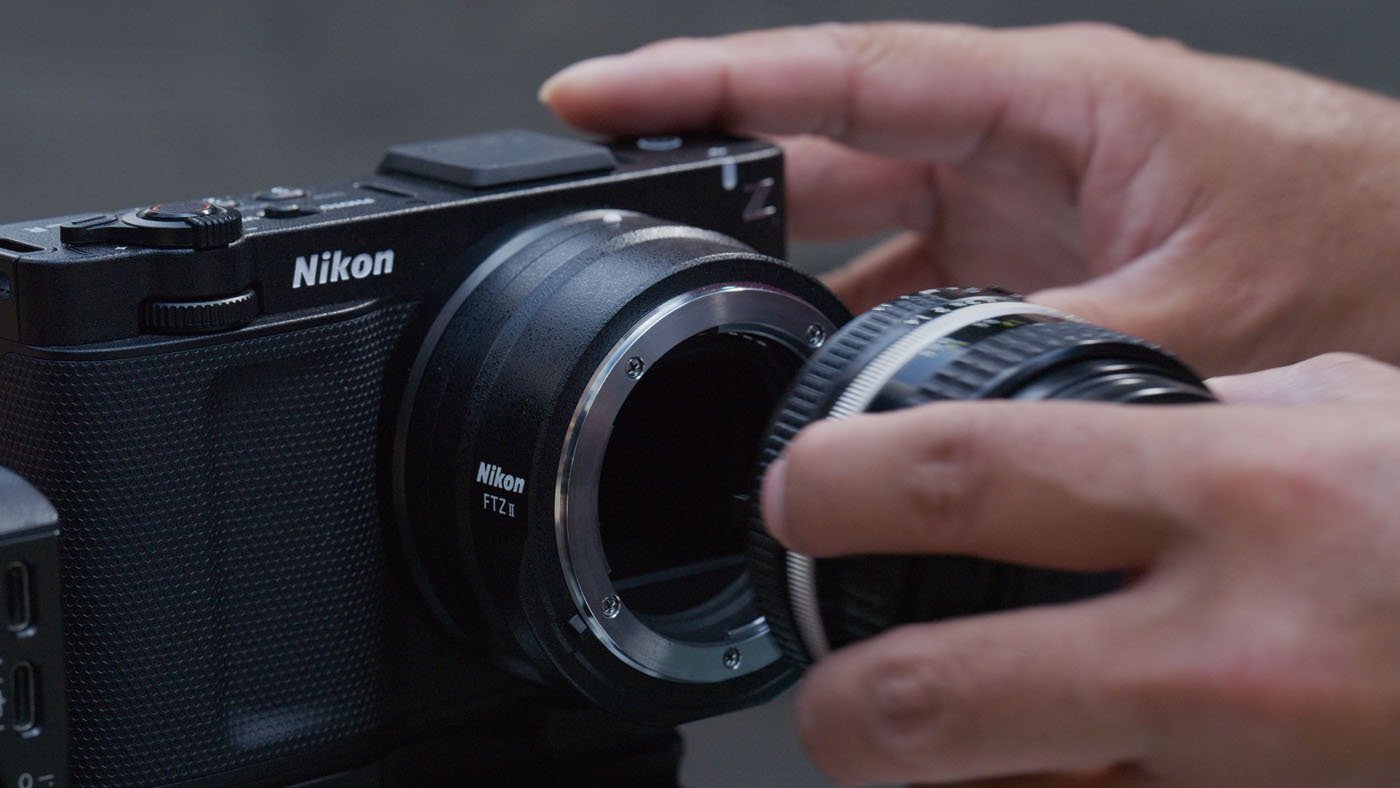
Price and availability of the Nikon ZR
The Nikon ZR will be available from October 20, 2025, priced at $2,196.
The Nikon ZR is available at B&H and specialist stores.
Our first take on the Nikon ZR
With the Nikon ZR, the Japanese manufacturer seems to have pulled off an ambitious gamble: delivering a compact, affordable cinema camera yet equipped with professional tools previously reserved for much pricier models. The integration of REDCODE RAW, Log3G10 and Wide Gamut internally makes it an ideal companion to RED cameras on a “crash cam” while keeping the same colorimetry.
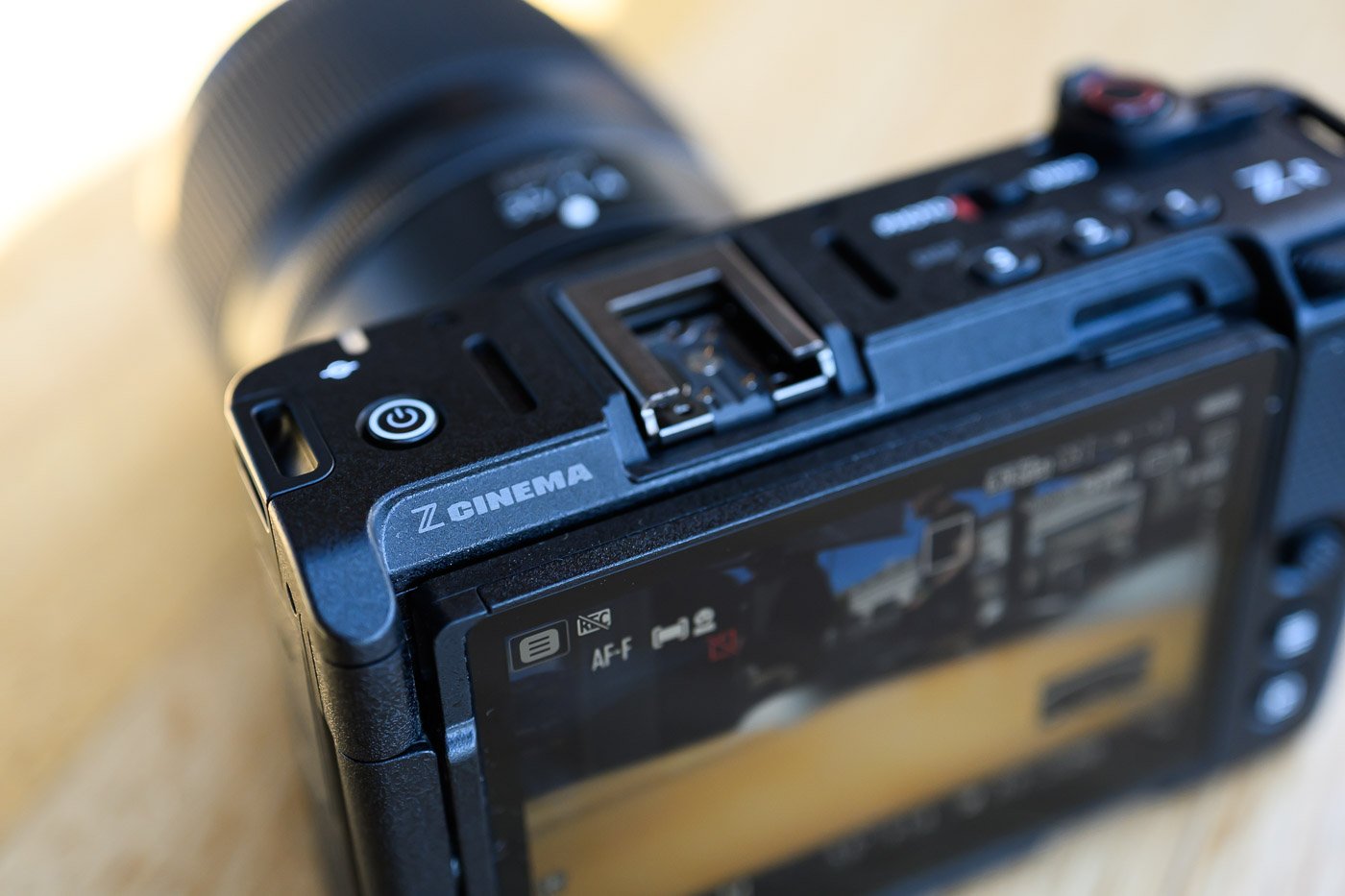
But it’s also a complete run-and-gun camera. Its very bright 4-inch screen, 32-bit float audio capture and compactness make it a ready-to-shoot body for documentary filmmakers, journalists and content creators.
At $2,196, the Nikon ZR aims to shake up a market dominated by Sony and Canon. An aggressive price that could allow Nikon to set a new benchmark in the world of compact cinema cameras. not

